Redcurrant is one of the small fruits perfect for making jam. Harvest is often plentiful and its tangy flavour a delight for refined palates. It is one of the jams of choice for breakfast, but is also used in baking when prepared as a jelly.
Here are our easy recipes for redcurrant jam and jelly, among the tastiest of summer.
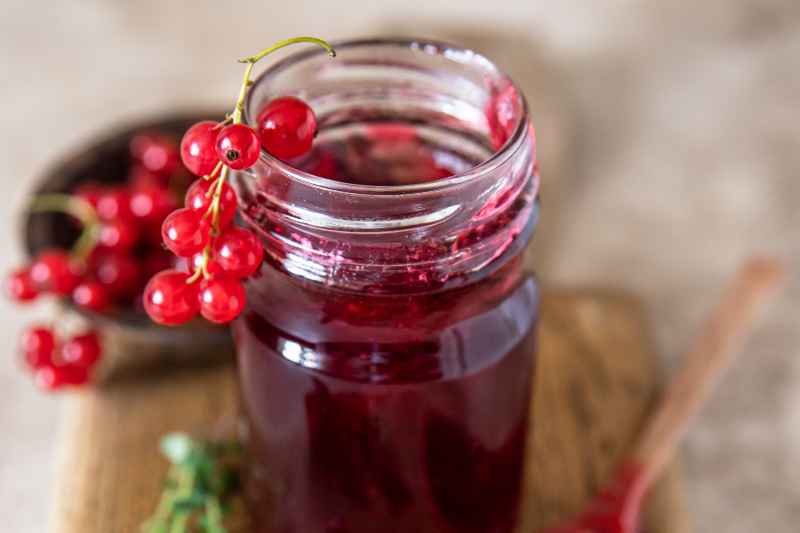
Which redcurrants for jam or jelly?
All redcurrants do well for jam or jelly, even gooseberries. You can mix different types from your garden or make jelly only from white or red redcurrants. Adding white redcurrants to red ones yields less acidic jellies. Versaillaise rouge, an old variety, and Junifer are among the best for making jam or jelly, as they are less acidic.
When and how to harvest your redcurrants?
In our regions, redcurrants reach full ripeness in early summer, between July and August depending on location. Pick redcurrants fully ripe, when they have a good red colour (or white for white varieties). As with other soft fruits, do not harvest after rain, berries will be waterlogged. Harvest in morning or evening, outside periods of high heat.
It is easier to remove stalks at harvest (also called destemming): do this gently by hand or using a fork, which helps avoid damaging the fruit.
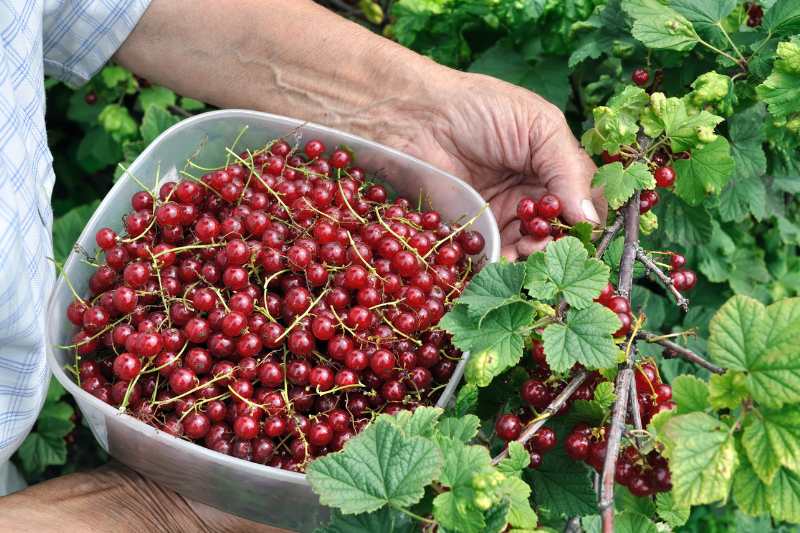
Homemade redcurrant jam recipe
If you are in a hurry or prefer jam texture!
Ingredients
- 1.5 kg redcurrants
- 900 g granulated sugar
- 2 small lemons or 1 large lemon
- Rinse redcurrants thoroughly with plenty of water after picking and destemming, then leave to drain in a colander.
- Scald jam jars and lids and leave to dry on a clean tea towel.
- Mix redcurrants with sugar and juice of the lemons in a large pan or a small copper jam pan.
- Boil over high heat for about 15 minutes, skimming occasionally with a jam skimmer.
- Check doneness: jam should coat a spoon and set on a plate.
- Fill jars immediately using a small ladle or jam funnel and close straight away, turning jars upside down to create a vacuum and ensure perfect sterilisation.
- Leave to cool completely and label with attractive labels and the date.
- Store in a dark place (cupboard, larder). Jams prepared with this sugar ratio will keep up to three years.
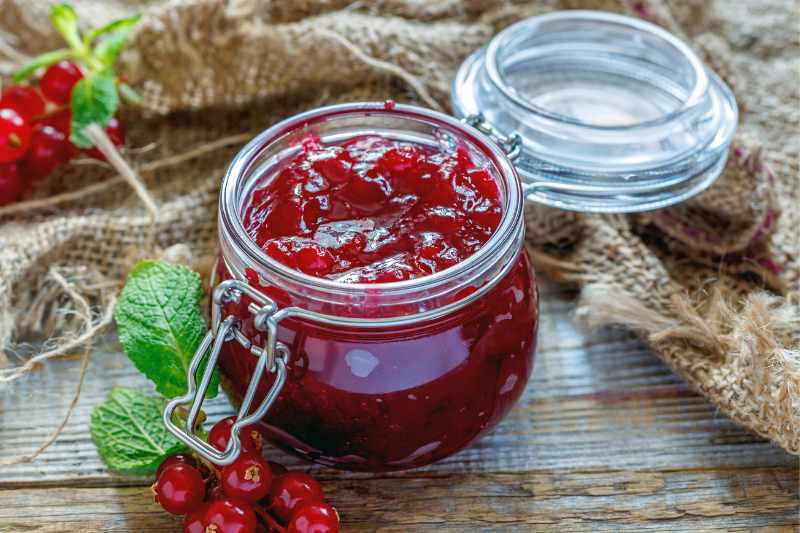
Redcurrant jelly
Jelly is prepared a little differently and takes longer, because redcurrants must first be passed through a food mill fitted with a fine disc to remove pips and skins. This yields a smooth, glossy jelly, since only the juice extracted from the fruit is cooked. For jelly, the amount of sugar required equals the weight of juice obtained.
- Rinse redcurrants after picking and destemming and leave to drain in a colander.
- Scald jars and lids and leave to dry on a clean tea towel.
- Mix redcurrants with 200 ml water.
- Bring to a boil and cook 10–15 minutes, until fruit bursts.
- Pass fruit mixture through a sieve or chinois, pressing gently with a wooden spoon or spatula to extract juice.
- Pass this juice through a damp cloth or muslin set over a sieve and let drain for at least one hour. You should obtain about 950 g of juice.
- Pour this redcurrant juice into the pan with granulated sugar (950 g for the jelly in this recipe, i.e. equivalent to the weight of the juice) and allow sugar to dissolve.
- Stir and cook, bringing to the boil for 5–8 minutes, stirring gently and skimming. N.B.: you can cook with the sugar in two stages, mixing only half the sugar at first until boiling, then adding the second half. This gives a more colourful jelly and a sharper flavour.
- Check setting (consistency) and pot up, as for jam.
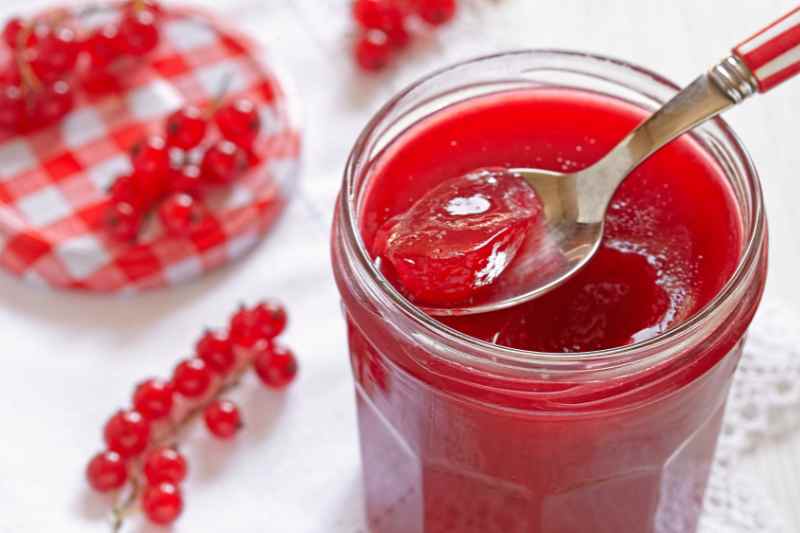
Variations
Like many red fruits, redcurrant pairs perfectly with its little cousins: try redcurrant-and-blackcurrant jelly, a classic, wonderful on morning toast, or redcurrant-and-raspberry jelly.
Personally, I do not like to overly alter this fruit, but you can also mix some redcurrant juice into cherry jam during cooking, or use equal proportions of redcurrants, white redcurrants and raspberries to obtain a fruitier, slightly less tart jelly, suitable for children who do not enjoy the sharp taste.
Uses for redcurrant jelly
- Redcurrant jelly is handy when preparing jams from red fruits low in pectin such as cherries or strawberries: it then acts as a gelling agent.
- Redcurrant jelly is very useful in baking for glazing tarts of red fruits such as strawberry or raspberry tarts, and also cheesecakes. It adds shine and a very indulgent finish!
- Redcurrant jelly enhances baked apples, simply add a teaspoon into each cored apple after removing from oven. Melted redcurrant jelly diluted with a little water is also used in summer Peaches Melba.
- More traditionally, enjoy this jam at breakfast or teatime. It is also delicious with a wheat crêpe, a waffle or plain fromage blanc.
- Dare to pair jelly with white meat dishes, or game, as a substitute for lingonberry jam when unavailable! Redcurrant jelly also helps bind a sauce to accompany duck breasts.
- Finally, as in my region near the Loire Valley in France, enjoy crémets d'Anjou topped with a few spoons of jelly or jam, loosened with a little water over heat, as an improvised red fruit coulis!
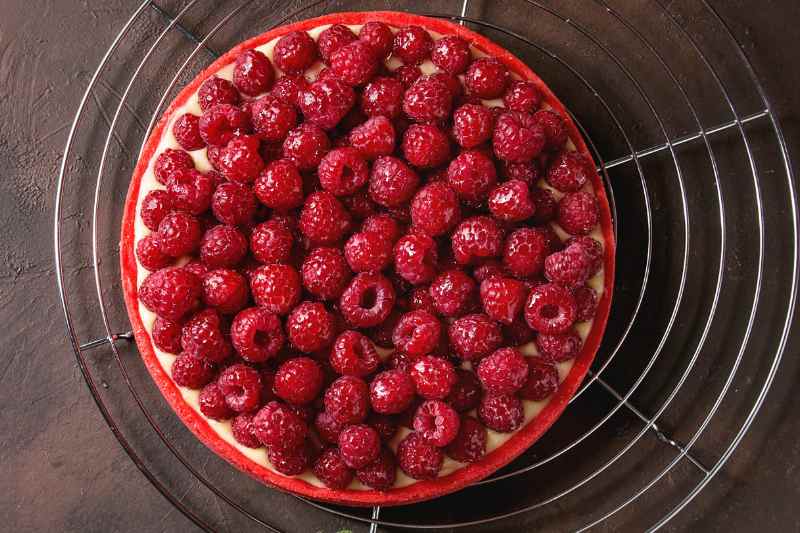






























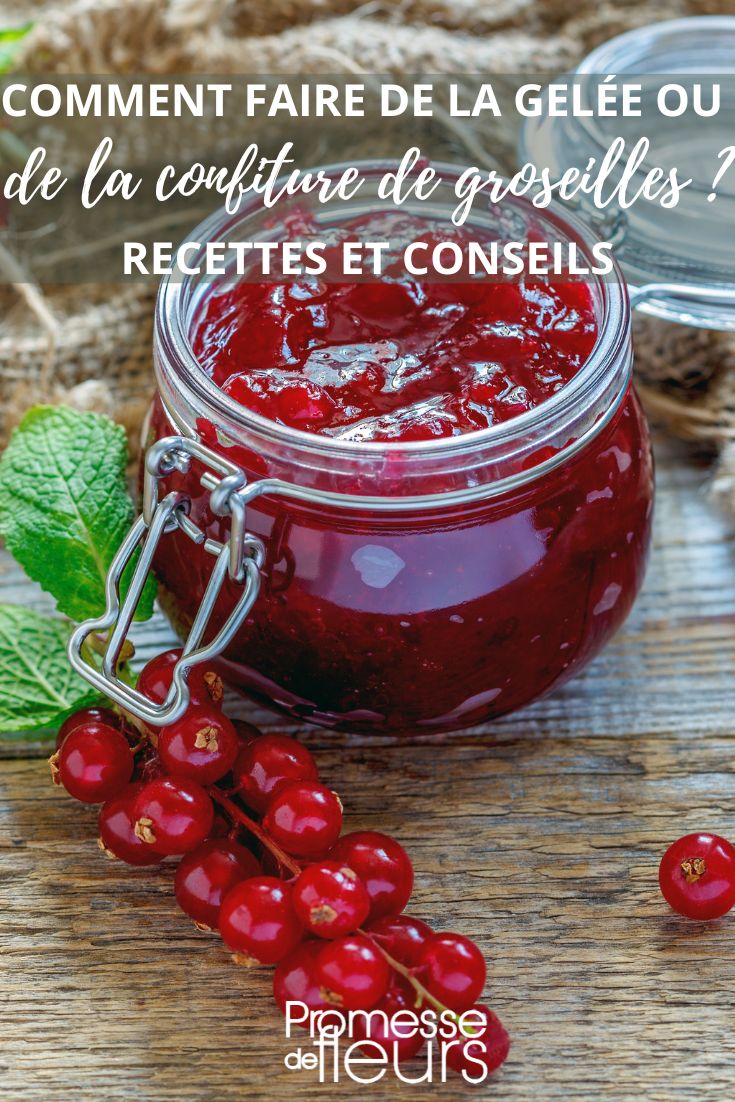
Comments